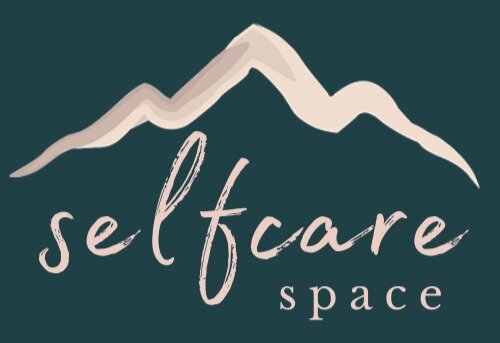The Ancient Healing Practice of Qi Gong
In today’s day and age, our fast-paced life supports a variety of lifestyles and habits that cause us to fall out of alignment with our own body, mind and spirit. Unrealistic societal pressure, social media ideals, stressful jobs and more, all contribute to one fact: for so many of us, it’s becoming increasingly difficult to slow down and just “be” with ourselves.
Once we are disconnected from ourselves for longer periods of time, we often have to start dealing with a whole host of mental health problems which only make it that much more difficult to reconnect to our bodies. And a vicious cycle is born.
If any of that sounds familiar and you’re on the hunt for a new healing practice that can benefit your mind, body and spirit, then let us introduce you to the ancient Chinese practice of Qi Gong. It’s an easy to learn and incredibly powerful practice that we know you’ll fall in love with!
1. What is Qi Gong?
Qi Gong or qigong (pronounced “chee gong”) is an ancient Chinese healing practice and martial art form that combines controlled, repetitive movements with breathing and meditation.
The goal of these practices is to help restore balance to our “Qi” (= the vital energy flowing through our body) as well as increase alignment and strength. The various postures are performed without pause, almost like a slow-motion dance that keeps our body in a constant flow.
In order to cultivate this life energy, Qi Gong commonly makes use of four different elements:
Movement
Breathing
Meditation/Mental Focus
Visualizations/Imagery
Different types of Qi Gong combine these different elements in different ways. Some forms are very slow, heavily focusing on gentle movements, breathing and meditation, while others can be more dynamic and energizing.
Overall, Qi Gong is an incredibly powerful healing practice that is easy to learn and fun to do for people with any health background. What exactly are the benefits we can get from Qi Gong?
Let’s take a look!
2. The ancient wisdom of Qi Gong has a long tradition of improving the mind, body and spirit at the same time.
From the perspective of Chinese medicine, all living organisms are made up of a field of energy that courses throughout the body called “Qi”. According to this ancient wisdom, this energy must flow properly because any blocks and imbalances are what cause physical, mental and spiritual disruption to our body.
These blocks and imbalances can occur from a variety of different sources such as deeply repressed emotions (anxiety, stress, anger, grief, etc.), trauma, lack of proper nutrition and exercise, childhood neglect, physical injury, abuse, etc.
The primary goal of Qi Gong therefore is to remove any of these blocks or imbalances in the body and restore the energy field to a place of harmony and equilibrium.
Practically, even a few minutes of practice can have an incredible energizing and rejuvenating effect. Even as beginners, the controlled breathing and gentle stretching can initially allow us to open the joints and muscles and release tension that we’ve been storing in our body. We might feel calmer, more relaxed and have better control over our emotional states.
If we manage to practice Qi Gong consistently, over time our entire energy system will be able to flow more freely and therefore start to nourish those parts of our bodies that have been cut off for years.
In the long term, continued practice has been shown to increase overall body strength, heal a variety of internal organs and systems (such as our digestion, nervous system, hormones, etc.) and even have a positive impact on sleep problems, chronic illnesses and acute injuries as well.
3. What is the history of Qi Gong?
With its roots in Chinese medicine, martial arts and philosophy, the practice of Qi Gong can be dated back as far as 4000 years.
It most likely originated in various forms of dance that were performed during Chinese tribal ceremonies in order to ward off both physical and mental disease for its members. Over time, these rhythms and movements then turned into sets and systems that were used as health exercises all throughout China.
Many different Chinese emperors, sages, philosophers, etc. have since put their own spin on these ancient movements and developed their own practices that influence how Qi Gong is practiced today.
One of the most common variations is called the 8 Pieces of Silk Brocade and it is rumored to have been created by General Yue Fei around 1200 AD who used these to train a powerful army. It includes 8 main postures called:
Two Hands Hold up the Heavens (an upward movement of the hands)
Drawing the Bow to Shoot the Eagle (a movement imitating the action of drawing a bow to either side)
Separate Heaven and Earth (a smooth motion building on the first move in which the hands press in opposite directions and switch positions)
Wise Owl Gazes Backwards (stretching the neck alternatingly to the left and the right)
Sway the Head and Shake the Tail (A low squat with the hands on the thighs and a twist backward)
Two Hands Hold the Feet (A stretch upwards followed by a forward bend and a holding of the toes)
Clench the Fists and Glare Fiercely (a punching movement to the sides or forward)
The Bouncing on the Toes (A push upward from the toes with a small rocking motion)
4. How to start practicing Qi Gong
If you’re interested in learning more about Qi Gong or even starting your own practice, then there are a variety of different places you can go for information.
You can check out:
A directory of Qi Gong teachers and therapists can be found here. If you’re looking for an at-home style practice, you might also find some helpful videos on YouTube or other platforms.
For all of our members, in The Self Care Space, we are also now offering live classes with a Qi Gong expert covering all the basics of Qigong and how it can support you on your own self care journey! Just find your way over to Live Events and/or Event Recordings and get started right away!
Don’t know about The Self Care Space or not already a member?
Regardless of where you are on your self care journey, we’ve made it our mission to support you through all of its ups and downs. Our membership is filled with self-guided prompts and programs on self-love, healthy relationships, breaking free from the past and managing a healthy mindset. We have countless guided meditations, healing visualizations as well as weekly live workshops and coaching sessions.
If you want to know more or are interested in signing up , you can find out all the relevant information here.
Whichever route you choose for your personal healing journey, we just want you to know we are proud of you for showing up for yourself in the first place!
xoxo,
The Self Care Space
Follow the ‘gram
Read More
Start Your Membership









